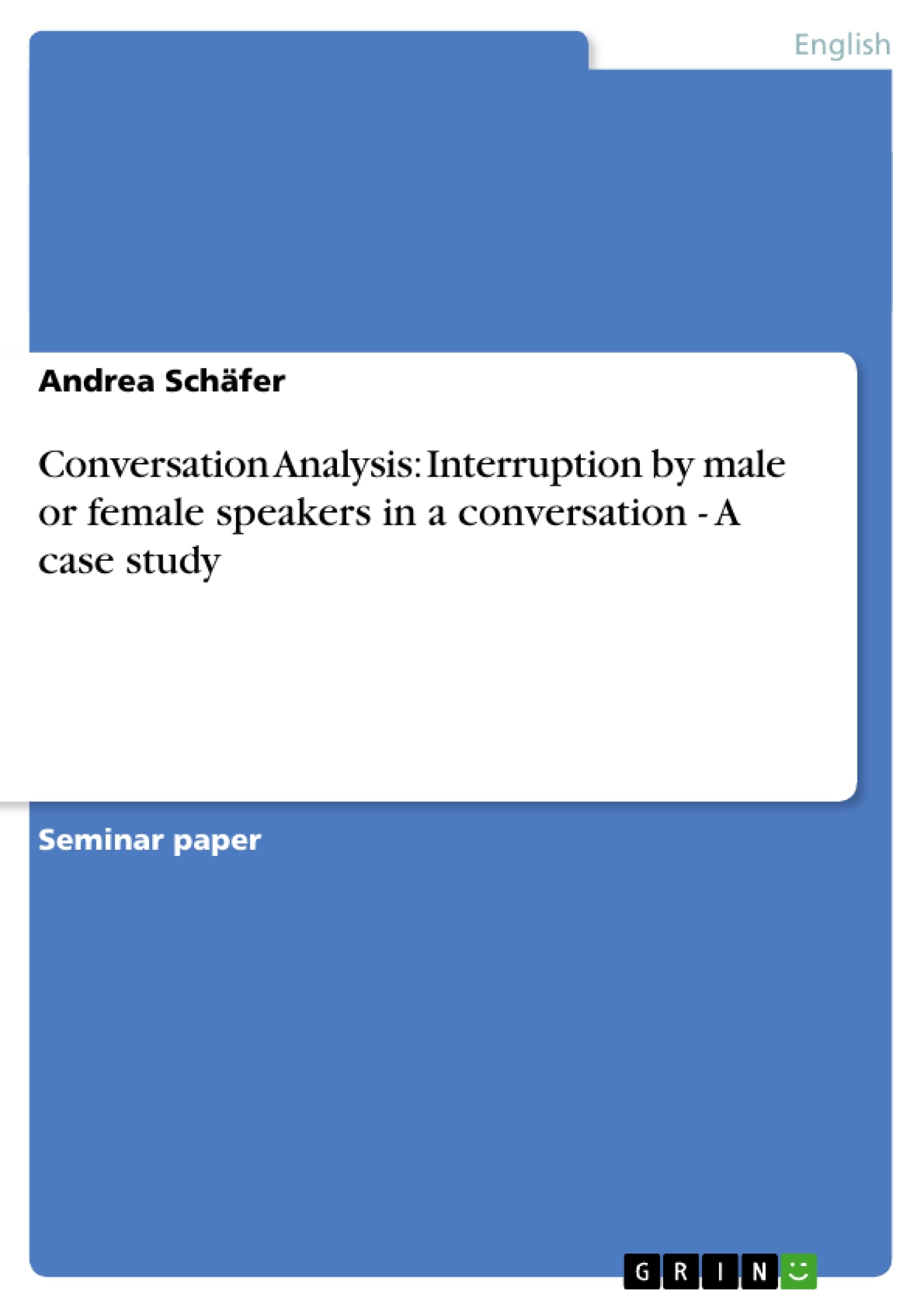Gender roles have always been an important issue in analyzing human behavior. In order to understand the interaction between men and women, it is useful to have a closer look at conversations between male and female speakers and to analyze how they communicate with each other. Some questions that of course occur are whether female speakers talk more than male speakers or if male speakers use more vernacular language, just to name a few examples. Obviously, there is a lot of stereotypical thinking in analyzing gender behavior and many people expect to find some clichés certified. The analysis in this term paper concerns the differences in interrupting by male or female speakers in a conversation. Former conversation analyses tried to demonstrate that in most cases men interrupt women more often than the other way round and that one main reason for this fact is that men always unconsciously try to dominate women and present power. Deborah Tannen examines this claim in her book “You just don’t understand: women and men in conversation” (Tannen 1990). While examining the behavior of male and female speakers in conversation she clearly points out that it is not enough to count interruptions in a conversation and to interpret those as an unconscious gender-typical habit, but that it is necessary to pay attention to the factors that caused an interruption and to look beyond the surface in order to understand the events and the development of a conversation. She emphasizes thatn […] interruption is inescapably a matter of interpretation regarding individuals’ rights and obligations. To determine whether a speaker is violating another speaker’s rights, you have to know a lot about both speakers and the situation. (Tannen 1990: 190)
Inhaltsverzeichnis (Table of Contents)
- Introduction
- Analysis
- Quantitative analysis: Who interrupts more often? Who is more successful?
- Qualitative analysis: Why do the speakers interrupt each other and what are the reactions?
- Short overview
- Interruption or cooperative overlap?
- Justified Interruptions
- Violent interruptions
- Jokes as interruptions
- Conclusion
- Bibliography
Zielsetzung und Themenschwerpunkte (Objectives and Key Themes)
This term paper analyzes the differences in interrupting behavior between male and female speakers in a conversation. It aims to determine whether men interrupt women more frequently than vice versa, and if so, whether this is a sign of dominance and power dynamics. The analysis examines both the quantitative frequency of interruptions and the qualitative nature of these interruptions, exploring the underlying intentions and reactions involved.
- Gender roles and communication patterns in conversation
- The prevalence of interruptions in mixed-gender conversations
- The distinction between intentional interruptions and cooperative overlaps
- The role of power dynamics in interruption behavior
- The importance of contextual analysis in understanding interruptions
Zusammenfassung der Kapitel (Chapter Summaries)
The introduction discusses the significance of analyzing gender roles in human behavior and the role of conversation analysis in understanding male-female interactions. It highlights the need for a deeper examination of interruptions beyond simply counting their frequency, emphasizing the importance of understanding the factors that cause them and the intentions behind them.
The quantitative analysis section presents data from an audio recording of a conversation between a man and a woman, showing that the man interrupts the woman more often. However, it acknowledges the need for a more nuanced qualitative analysis to determine the nature and motivations behind these interruptions.
The qualitative analysis section delves into the different types of interruptions observed in the conversation, considering factors like time of occurrence, speaker intention, and reactions of the other speaker. It explores the distinction between intentional interruptions, cooperative overlaps, justified interruptions, violent interruptions, and the use of jokes as interruptions.
Schlüsselwörter (Keywords)
This term paper focuses on the following key concepts: conversation analysis, gender roles, interruption, cooperative overlap, quantitative analysis, qualitative analysis, dominance, power dynamics, communication styles, male-female interactions.
- Citar trabajo
- Andrea Schäfer (Autor), 2006, Conversation Analysis: Interruption by male or female speakers in a conversation - A case study, Múnich, GRIN Verlag, https://www.grin.com/document/63336



